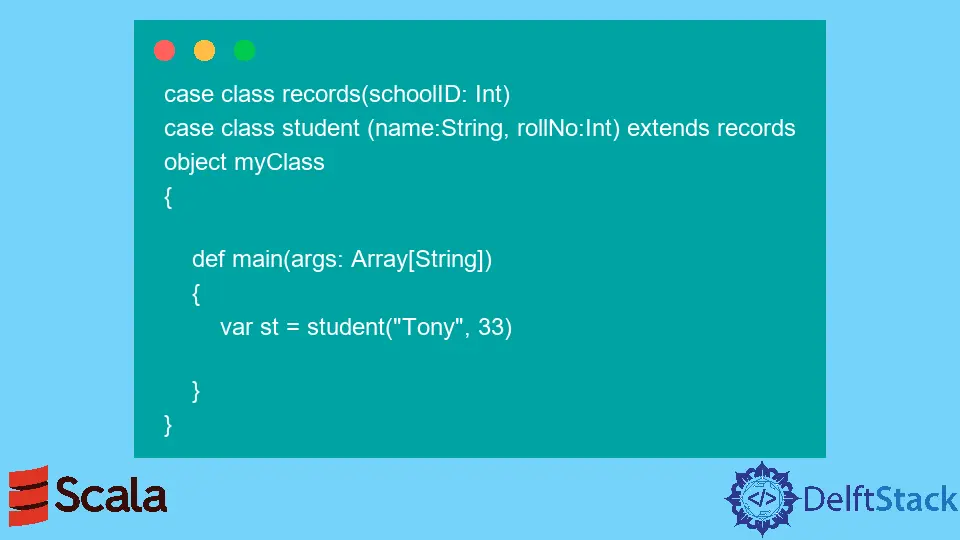How to Extend Class in Scala

In this article, we will learn about extending classes in Scala.
Extend Class in Scala
In Scala, we extend a class to achieve one of the most important parts of object-oriented programming (OOP): inheritance. To extend a class in Scala, we have to use an extend keyword.
Syntax:
derived_class_name extends base_class_name
{
}
Let’s see an example to understand it better.
Example code:
class Parent
{
var child1: String = "Tony"
var child2: String = "Nat"
}
class childOne extends Parent
{
var age = 23
var gender = "Male"
def display()
{
println("Name : " +child1)
println("Age : "+age)
println("Gender : "+gender)
}
}
class childTwo extends Parent
{
var age = 18
var gender = "Female"
def display()
{
println("Name : " +child2)
println("Age : "+age)
println("Gender : "+gender)
}
}
object myClass{
def main(args: Array[String])
{
val obj1 = new childOne()
val obj2 = new childTwo()
obj1.display()
obj2.display()
}
}
Output:
Name : Tony
Age : 23
Gender : Male
Name : Nat
Age : 18
Gender : Female
In the above code, we can observe classes childOne, and childTwo inherited data from the base class parent.
Extend Case Classes in Scala
Scala’s case class is a special kind of class that is good at modeling immutable data. They are very useful in pattern matching.
We add a case keyword before the class to make it a case class.
Example code one:
case class student (name:String, rollNo:Int)
object myClass
{
def main(args: Array[String])
{
var st = student("Tony", 33)
println("Name of the student is: " + st.name);
println("Roll number of the student is: " + st.rollNo);
}
}
Output:
Name of the student is: Tony
Roll number of the student is: 33
Now let’s see how to extend or inherit these case classes. Unlike normal classes, we have some restrictions here.
Example code two:
case class records(schoolID: Int)
case class student (name:String, rollNo:Int) extends records
object myClass
{
def main(args: Array[String])
{
var st = student("Tony", 33)
}
}
Output:
error: case class student has case ancestor records, but case-to-case inheritance is prohibited
The above code gives an error because case-to-case class inheritance is prohibited in Scala. According to Scala, the case class can only extend a normal class, an abstract class or a trait.
Example code three:
Here we try to extend an abstract class.
abstract class records(schoolName: String)
{
def name:Unit
}
case class student (schoolName:String) extends records(schoolName)
{
override def name:Unit = println(schoolName)
}
object myClass
{
def main(args: Array[String])
{
var st = student("delhi public school")
st.name
}
}
Output:
delhi public school
Example code four:
Here we try to extend a trait.
trait information
{
def id: Int
def name: String
}
case class student (id:Int,name:String) extends information
{
println(id+" "+name)
}
object myClass
{
def main(args: Array[String])
{
val temp: information = student(230,"Tony")
}
}
Output:
230 Tony
Conclusion
This article taught us how to extend a class in Scala; we also saw how to extend case classes and observed its restrictions when inheriting another class.
